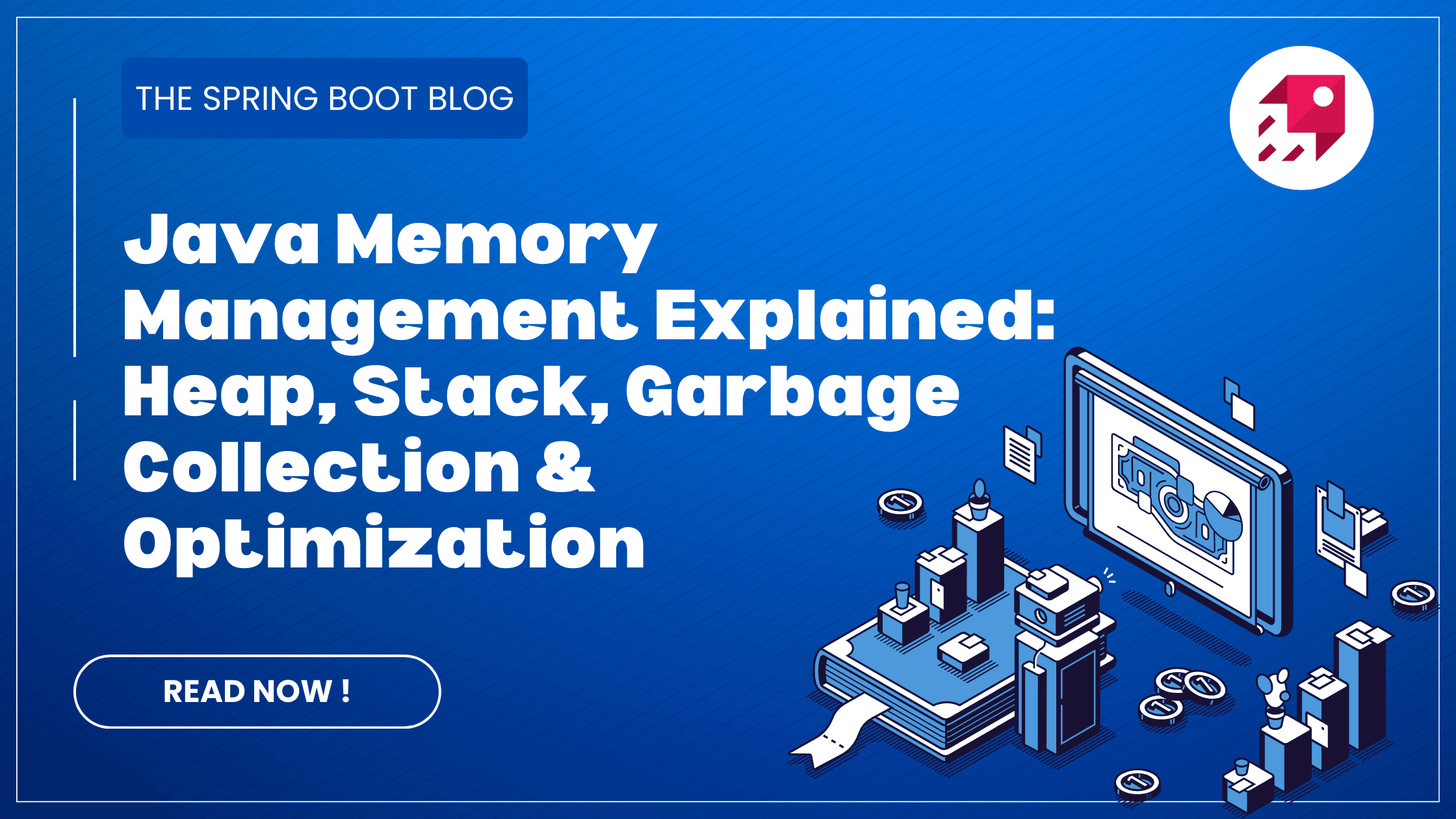
Java Memory Management Explained: Heap, Stack, Garbage Collection & Optimization (2025 Guide)
Master Java Memory Management in 2025! Learn how JVM handles heap, stack, method area, garbage collection, references, and optimization techniques. Avoid memory leaks, improve performance, and build reliable Java applications.
Munaf Badarpura
August 22, 2025
4 min read
Java’s automatic memory management is one of the main reasons behind its popularity. Developers don’t have to manually allocate or free memory like in C or C++, thanks to the Java Virtual Machine (JVM) and its Garbage Collector (GC).
However, relying blindly on automatic memory management can lead to performance bottlenecks, memory leaks, and OutOfMemoryErrors. To write scalable applications, every Java developer should understand how memory works in JVM, common pitfalls, and best practices.
In this article, I’ll explain the Java memory model, garbage collection, common mistakes, and optimization techniques with code examples.
1. The Structure of Java Memory in JVM#
When you run a Java program, the JVM divides memory into different regions. Each region has its own purpose.
Heap Memory :
⇒ The heap is the main runtime data area where all Java objects and their instance variables are stored. It is managed automatically by the Garbage Collector (GC), which reclaims memory occupied by objects no longer in use.
⇒ The heap itself is divided into two main regions: the Young Generation and the Old Generation. The Young Generation is further split into the Eden Space, where new objects are first created, and two Survivor Spaces (S0 and S1), where objects that survive garbage collection are moved.
Stack Memory :
⇒ Each thread in a Java application has its own stack, which is used to store method call details, local variables, primitive data types, and references to objects located in the heap. The stack grows and shrinks dynamically as methods are invoked and returned.
⇒ Memory in the stack is managed automatically and is thread-specific, making it inherently thread-safe. If the stack grows beyond its allocated size, usually due to deep or infinite recursion, the program will throw a StackOverflowError.
Method Area (MetaSpace in Java 8+) : ⇒ The method area is a special memory region that stores information about classes, including metadata such as class names, access modifiers, superclass information, method bytecode, static variables, and the runtime constant pool.
PC Register & Native Memory :
⇒ The Program Counter (PC) Register is a tiny but crucial memory area that each thread maintains independently. It holds the address of the currently executing JVM instruction, ensuring that instructions are executed in the correct sequence.
Visualization:
2. Heap Memory and Generations#
The Heap is the most important memory region in Java. It is divided into Young Generation and Old Generation.
- Young Generation: Stores newly created objects. Most objects die here quickly.
- Eden Space: Where new objects are allocated.
- Survivor Spaces: Objects that survive GC are moved here.
- Old Generation (Tenured): Stores long-lived objects that survived multiple GCs.
Example:
Here, most str objects will die quickly and be collected in the Young Generation.
3. Stack Memory and Local Variables#
The Stack is created for each thread. It stores method calls and local variables.
Example:
If you call a recursive method without a base case, you’ll face StackOverflowError.
4. Garbage Collection (GC)#
Java’s Garbage Collector automatically reclaims memory from objects that are no longer reachable.
Types of Garbage Collectors:#
- Serial GC – Simple, single-threaded, good for small apps.
- Parallel GC – Multiple threads, good for throughput.
- CMS (Concurrent Mark Sweep) – Low pause time.
- G1 GC (Garbage First) – Default since Java 9, balances throughput and pause time.
Example:
5. Common Memory Management Mistakes#
1. Forgetting to Remove References (Memory Leaks)#
Fix: Clear references when no longer needed.
2. Using Static Variables Carelessly#
Static variables live until JVM shutdown, leading to memory leaks if overused.
6. Best Practices for Efficient Memory Management#
- Use local variables where possible (automatically cleared after method ends).
- Prefer StringBuilder over String concatenation in loops.
- Use WeakReference / SoftReference for caches.
- Always close resources (
try-with-resources). - Profile memory with tools like VisualVM, JConsole, YourKit, Eclipse MAT.
Conclusion#
Understanding Java memory management is crucial for building high-performance, scalable applications. By mastering Heap, Stack, Garbage Collection, and best practices, you can avoid memory leaks, optimize resource usage, and write more reliable code.
Want to Master Spring Boot and Land Your Dream Job?
Struggling with coding interviews? Learn Data Structures & Algorithms (DSA) with our expert-led course. Build strong problem-solving skills, write optimized code, and crack top tech interviews with ease
Learn more

